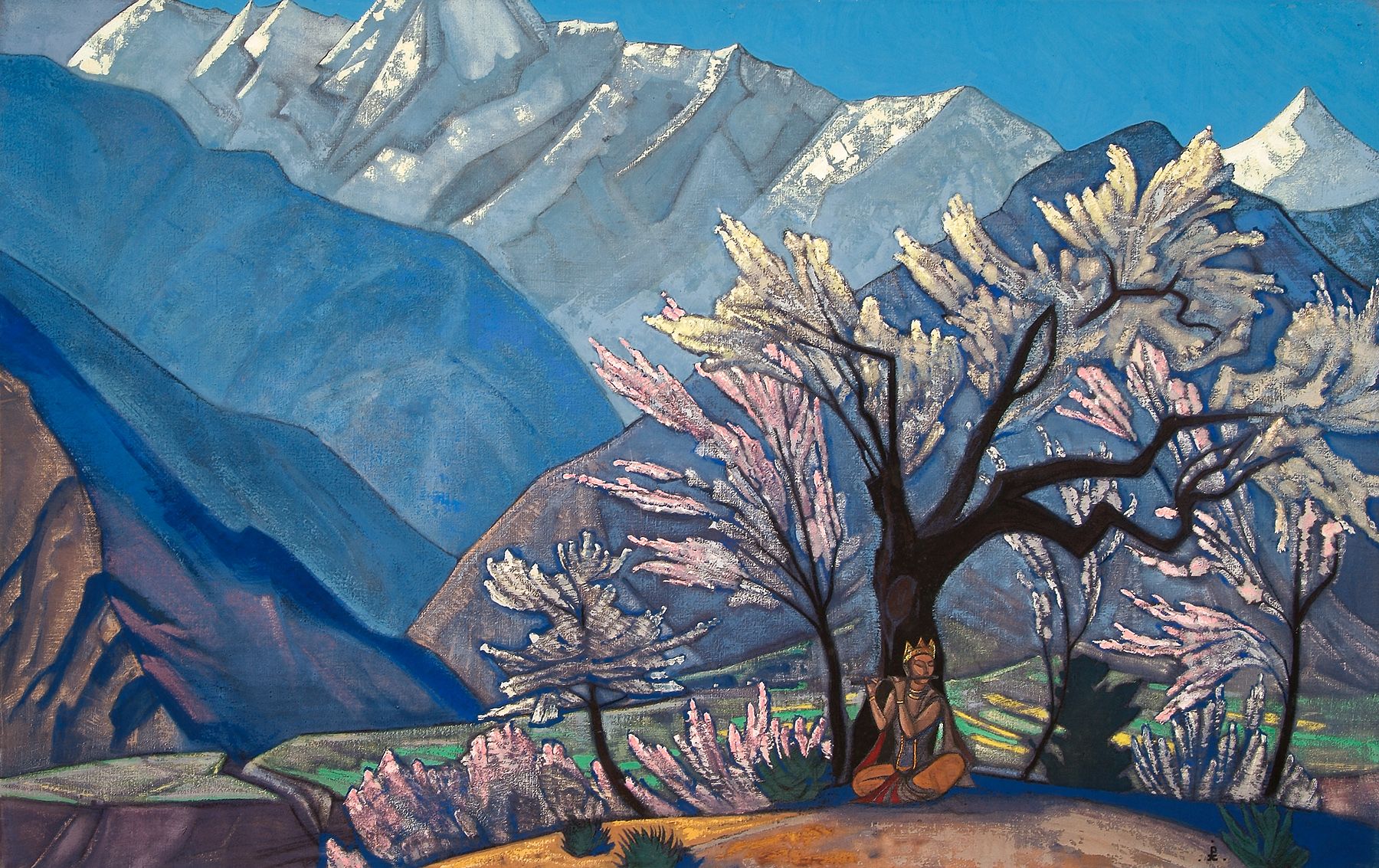Nicholas roerich Krishna: Spring in Kulu (1930), a canvas painting in the series of paintings titled Kulu by the Russian painter, Nikolai Konstantinovich Roerich, is a statement of spirituality in a naturalistic approach stemming from the artist’s fascination with the beauty of the Himalayas.
Nicholas Roerich Shambhala
The composition of the artwork includes a flute playing Krishna in the foreground with the entire landscape of the Himalayas in spring with changing colours in the background.
The Painting
Unlike the usual depiction of Krishna with blue (dark) skin, the painting depicts Krishna with a more common beige-brown color. The initial spot that one’s eye goes to is the vibrant blossoms, then the distant white mountain tops.
Unconventional painterly language is present in the middle space, first to green valleys then numerous overlapping foothills (each almost flat from the viewer’s point of view) compared to the other portions of the composition.
Using the tempera method of mixing egg yolk with the paint to make it more translucent, he depicts the shimmering snow-capped mountains changing colors and structure.
The Symbolism
The painting uses symbolism and is, in its very aesthetic, a religious painting although it could be interpreted in numerous ways. His portrayal of his inner assimilation of nature and relating it to the world’s religions often steeped in mystical auras.
Not uncommon for religious mystics, Roerich painted numerous entire landscapes of mountains that could be indicative of mountains being the path to the ultimate mystery.
The Artist’s Spiritual Beliefs
His interest to garner more knowledge about Buddhism, worldly religions and art drew him to the Indian subcontinent in 1923 after his travels and stays across the world in places like Russia, Japan, China and Tibet.
The subtle play of light in his paintings is the result of continuous meditation, an integral part of his spiritual evolution.
Roerich’s belief of the universality of religion can be particularly seen in his work, ‘The Holy Shepherd’ where he depicted the figure of Krishna in the persona of the Slavic folk hero ‘Lel’ which could also be interpreted as Christ.
Thus, his belief in the theory of the same spiritual experience through naturalistic mysticism being experienced through any and all religions remains strong through the years by way of his work.



